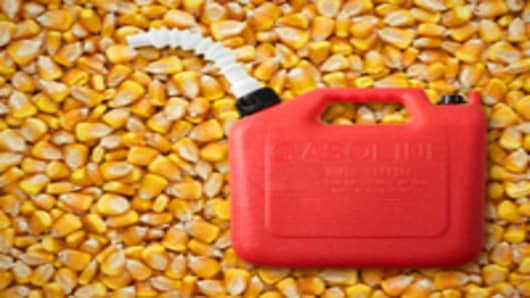Jim Lane: The cellulosic biofuels companies like INEOS Bio and Mascoma are just now commercially deploying — right after that is a generation of thermochemical technologies like KiOR. After that, post-biomass companies like Joule are going to be heading for scale.
Oilprice.com: In a recent article we covered sweet sorghum as a biofuel investors should keep an eye on as the Environmental Protection Agency (EPA) prepares for its final approval of the grain for ethanol production. Unlike corn, it does not compete with food crops, while environmentally, its footprint is rather small. What are your thoughts on sweet sorghum?
Jim Lane: It's an excellent rotation crop with sugarcane, highly suitable for Brazil for example - it can grow during the off-season for cane.
Oilprice.com: What is the environment like for biofuel investments? What biofuels are receiving the most investment and which countries are the biggest investors.
Jim Lane: All sectors have been doing pretty well of late, though companies that make intermediates have market flexibility and have been doing especially well. Ditto for those who can make chemicals as easily as fuel. US by far is the biggest investor, though China is coming along.
Oilprice.com: An innovative study by Zah et al. which was commissioned by the Swiss government found that most (21 out of 26) biofuels reduce greenhouse-gas emissions by more than 30% relative to gasoline. But nearly half (12 out of 26) of the biofuels—including the economically most important ones, namely U.S. corn ethanol, Brazilian sugarcane ethanol and soy diesel, and Malaysian palm-oil diesel—have greater aggregate environmental costs than fossil fuels. How do you respond to this?
Jim Lane:
We need more data and less assumption-based modeling. It all comes down to how you count indirect land-use change. The models are hugely sensitive to untested assumptions. What is needed is a credible data-set of land use, and a model that can predict real outcomes.
Oilprice.com: What is your opinion on electrofuels? Do you believe that they are the future of biofuels?
Jim Lane: They are a fascinating opportunity to get around the limitations and inefficiencies in photosynthesis. Right now we are going through a promising round of investments from ARPA-E — we'll have to wait and see if the data looks good.
Oilprice.com: Do you believe that the new process developed by researchers at the Michigan State University, which claims to increase the energy recovered from corn in the production of ethanol by 2000%, could prove a hero of the biofuel industry and see its rise to become a major source of transportation fuel?
Jim Lane: I doubt there will be much more corn ethanol capacity building.
Oilprice.com: A lot of people are talking about algae biofuels and how researchers should befocusing their attention here. A recent study put out by the respected energy research firm SBI predicts a compound annual growth rate of 43.1% and a $1.6 billion market in 2015 for algae biofuels. That is double digit growth for the emerging industry. What are your thoughts on algae biofuels? Should more research be focused on algae than crops like corn, sorghum, switchgrass, etc..?
Jim Lane: The DOE has a funding opportunity next year focused on algae yields, and that's welcome, and for now that is what is needed. With respect to other feedstocks - they all deserve research on stress tolerance, pest resistance, and yield improvement .
Oilprice.com: Some start-up companies are abandoning biofuels and are instead using the same processes to make higher-margin chemicals for products such as plastics or cosmetics. Do you see this as a growing trend amongst biofuel producers?
Jim Lane: The poorly-financed ones will have to go this route - and why not? It's all the same barrel of oil they are replacing, whether it is the top of the barrel, economically, or the bottom.
Oilprice.com: The US Navy recently paid $26 a gallon for the biofuel it used in the RIMPAC exercises, and the Air Force paid $59 a gallon. What are your thoughts on such extravagant spending?
Jim Lane: They need to test and certify the fuels, and the quantities are small. Remember, they need marine military spec fuel, this isn't stuff you can draw off the same pump used for land transport. If you ordered the same quantity of fossil fuels, it would cost the same as they are paying for advanced biofuels. When it goes to commercial volume, the costs will be the same as fossil fuels.
Oilprice.com: Do you believe the shale revolution and improvements in oilfield extraction technologies will affect investments in biofuels?
Jim Lane: Two things we are already seeing. There's a tremendous uptick in interest in GTL/biofuels and CTL/biofuels mixes - where you get the price attributes from the one and environmental attributes from the other. We're also likely to see more effective distribution of CO2 for enhanced oil recovery, and that's a feedstocks delivery system for biofuels as well.
—This story originally appeared on Oilprice.com. Clickhere to read the original story.



